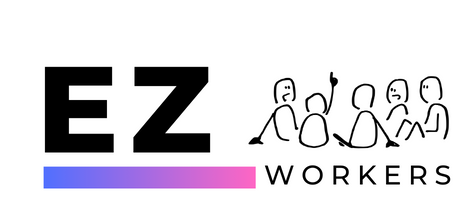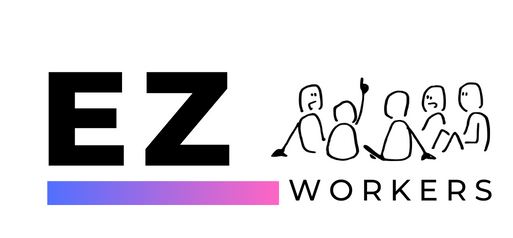
Evolution Korea
Add a review FollowOverview
-
Founded Date July 17, 1960
-
Sectors Government & NGO
-
Posted Jobs 0
-
Viewed 80
Company Details
- Company Logo 12
-
Company Website
-
Official Email Address ivy_kauffmann@9hfg8.gemmasmith.co.uk
-
Company Head Office address Kilen 49
-
Contact Number 73
Company Description
Guide To Evolution Korea: The Intermediate Guide For Evolution Korea
Korean scientists aren’t taking any chances in the debate over evolution. The Society for Textbook Revise has been fighting to get rid of Archaeopteryx as well as horses and other evolutionist icons from textbooks.
Confucian traditions that emphasize worldly success and high valuation of education, continue to dominate the culture of the country. But Korea is looking for the new model of development.
Origins
The growth of Iron Age cultures brought more sophisticated states to the Korean Peninsula, including Goguryeo and Baekje. They all developed a distinct culture which blended with the influence of their powerful neighbours and they also adopted aspects of Chinese culture, including Confucianism and Buddhism, although shamanism continued to be practised too.
Goguryeo was the first of these kingdoms to implement its own form of government on the Korean people. It established a king-centered system of government in the early 2nd Century. It expanded its territory into Manchuria and the north of the Peninsula with a series wars that drove the Han loyalists out of the region.
In this time there was a regional confederation known as Buyeo was created. In the Samguk yusa of the 13th century Wang Geon’s name was listed as the king. Buyeo became known as Goryeo and this is the reason why the name Korea came to be. Goryeo was a prosperous commercial and economic system, and was a centre for education. The people who lived there cultivated crops and raised livestock, such as sheep and goats. They also made furs from them as well. They wrote poetry and dance-dramas with masks like sandaenori or tallori and held a festival every year called Yeonggo in December.
The economy of Goryeo was stimulated by the booming trade with other nations, including the Song Dynasty of China. Traders from Central Asia, Arabia, Southeast Asia and Japan came to Byeongnando which was the entrance to the capital city of Gaeseong. Some of the items they brought were silk and medicinal herbs.
From around 8,000 BCE the Koreans began to establish permanent settlements and cultivating cereal crops. They also developed polished pottery, stone tools and started organising themselves into clan societies. The Neolithic Age continued until the 12th century BC. At this time Gija was a prince of the Shang dynasty of China is believed to have brought a new high culture to Korea. Until the 20th century many Koreans believed that Dangun and Gija gave Korea its people and their basic culture as well as their culture.
Functions
Korea’s old paradigm of development, which emphasized the state’s capital accumulation and government intervention in industries and business as well as a rapid economic growth that took it from being one of the poorest nations in the world to being among the top of OECD nations in just three decades. However, the system was fraught with corruption and moral hazard which made it not sustainable in a global environment of trade liberalization, openness and democratization.
The current crisis has revealed the weaknesses of the current paradigm and it is likely that a new model will replace it. Chapters 3 and 4 look at the genesis of Korea’s business-government risk partnership, and demonstrate how the emergence of economic actors who have an interest in preserving this model prevented it from making fundamental changes. By focusing on corporate governance and financial resource allocation, these chapters provide a detailed analysis of the causes of the crisis and point to ways of moving forward through reforms.
Chapter 5 traces the possible routes of Korea’s evolving development paradigm during the post-crisis time frame, examining both the legacies of the past and the new developments triggered by the IT revolution and globalization. It also examines how these trends will impact Korea’s political and social structures.
The major finding is that there are several emerging trends that are transforming the nature of power and will determine the future of the country. Despite the fact that participation in politics in Korea is extremely restricted new forms of democracy are emerging which override political parties and challenge them, changing the democratic system in the country.
Another significant finding is that the power of the Korean elite isn’t as powerful as it once was and that a significant portion of society is feeling of disconnection from the ruling class. This indicates the need for more civic participation and education and new models of power-sharing. The chapter concludes that the success or failure of Korea’s development model will depend on how well these new ideas are incorporated with the ability to make tough decisions.
Benefits
South Korea has the ninth largest economy in the world, and the sixth fastest-growing. It has an expanding middle class and an extensive R&D infrastructure that is the driving force behind innovation. The government has recently increased its investment in infrastructure projects, to help boost economic growth and encourage social equity.
In 2008 the Lee Myung-bak administration announced five indicators that would be used in an effort to establish a new development system with a focus on improvements and practicality. The administration made efforts to streamline the government’s organization, privatize public corporations equipped with greater efficiency, and reform administrative regulations.
Since the conclusion of the Cold War, South Korea is pursuing a strategy for integration of its economy the rest of the world and beyond the region. The exports of advanced manufacturing technology as well as high-tech consumer electronics have become a major source of income. The government has also been promoting Saemaeul Undong, which is a new movement of the community, to transform the country from one that is primarily agricultural to one that is focused on manufacturing.
The country has a high quality of life and provides many benefits to its employees including maternity leave and job stability. Moreover, employers are required to subscribe to accident insurance that covers payments associated with work-related illness or injury. In addition, it is common for companies to offer private medical insurance that offers protection for illnesses that are not covered by National Health Insurance.
South Korea is viewed as a success model for many developing countries across the globe. The global financial crisis of 1997, which swept Asia and the world, challenged this notion. The crisis shattered the myths about Asia’s miracle economies, and led to a fundamentally reappraisal on the role of governments in regulating risky private ventures.
It appears that Korea’s destiny is still uncertain in the aftermath of these changes. On the other hand, a new generation of leaders has embraced the image of an “strong” leader and begun to experiment with market-oriented policy. On the contrary, a strong domestic power base has made it difficult to implement fundamental change.
Disadvantages
The reemergence of the creationists is a major hurdle to Korean science’s efforts in educating citizens about evolution. While the majority of Koreans support the teaching of evolution in schools, a small group of creationist groups — led by a microbiologist called Bun-Sam Lim, the head of the Society for Textbook Revise (STR)–is insisting on its removal from textbooks. STR believes that teaching evolution promotes “atheist materialism” and portrays an “unhopeful” worldview for students, which can cause them to lose faith in humanity.
The causes of this anti-evolution stance are complex and varied. Some researchers suggest that it is due to religious belief, while others point to an increasing prevalence of anti-intellectualism, which has been exacerbated by growing political elite fragmentation along ideologies, regions, class, and gender. The one-sided populism that is backed by powerful conservative think groups, business interests, and other influential organizations, has also exacerbated public mistrust of the scientific community.
In the final analysis the study’s findings about widespread vulnerabilities highlight a need for targeted policy interventions that can reduce them before they occur. These insights will help Seoul to achieve its dream of becoming an urban landscape that is cohesive.
 In the case of the COVID-19 pandemic, pinpointing the most vulnerable areas and their inhabitants is essential to devise specific, empathetic policy measures to ensure their safety and welfare. The significant impact of COVID-19 on Jjokbangs, for example, is a sign of socio-economic inequality that can compound vulnerability to both natural and man-made disasters.
In the case of the COVID-19 pandemic, pinpointing the most vulnerable areas and their inhabitants is essential to devise specific, empathetic policy measures to ensure their safety and welfare. The significant impact of COVID-19 on Jjokbangs, for example, is a sign of socio-economic inequality that can compound vulnerability to both natural and man-made disasters.
 To overcome this, South Korea needs a more inclusive civil society that brings all communities together to address the city’s most pressing challenges. This requires a fundamental shift in the structure of the institution beginning with the power of the presidency. Currently, the Blue House is able to mobilize a huge bureaucracy as well as politically leverage the Supreme Prosecutor’s Office and intelligence bureau, which are not subject to oversight by parliamentarians or independent inspection agencies. This gives the president enormous influence to enforce his or her vision on the rest of the country. This recipe can lead stagnation and polarization of the country.
To overcome this, South Korea needs a more inclusive civil society that brings all communities together to address the city’s most pressing challenges. This requires a fundamental shift in the structure of the institution beginning with the power of the presidency. Currently, the Blue House is able to mobilize a huge bureaucracy as well as politically leverage the Supreme Prosecutor’s Office and intelligence bureau, which are not subject to oversight by parliamentarians or independent inspection agencies. This gives the president enormous influence to enforce his or her vision on the rest of the country. This recipe can lead stagnation and polarization of the country.



